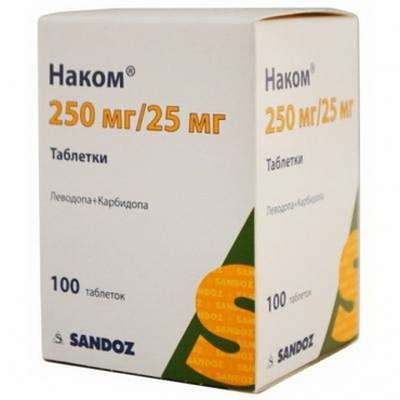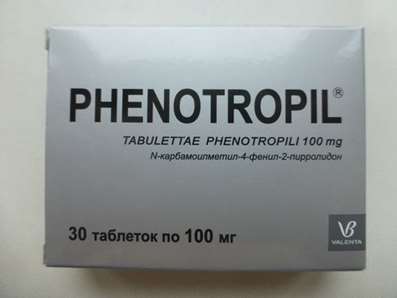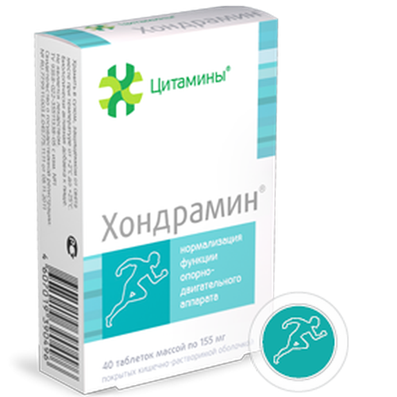Instruction for use: Cycloral-FS
I want this, give me price
Dosage form: Soft capsules
Active substance: Cyclosporinum
ATX
L04AD01 Ciclosporin
Pharmacological group:
Immunodepressants
The nosological classification (ICD-10)
H20.9 Iridocyclitis, unspecified: Iridocyclitis; Diffusive posterior uveitis; Keratouveit; Uveitis of the middle or posterior portion of the eye; Vision-threatening uveitis of the middle or posterior portion of the eye; Keratouwites; Anterior uveitis; Sluggish anterior uveitis; Endogenous uveitis; Inflammation of the ciliary body; Uveitis of the anterior portion of the eyeball; Sympathetic uveitis
L20 Atopic dermatitis: Allergic diseases of the skin; Allergic skin disease noninfectious etiology; Allergic skin disease etiology nemikrobnoy; Allergic skin diseases; Allergic skin lesions; Allergic reactions on the skin; atopic dermatitis; Allergic dermatosis; Allergic diathesis; Allergic itching dermatosis; Allergic skin disease; Allergic skin irritation; allergic Dermatitis; atopic Dermatitis; allergic dermatoses; exudative diathesis; Itchy atopic eczema Itchy allergic dermatosis; Allergic skin disease; Cutaneous allergic reaction to drugs and chemicals; Cutaneous reactions to medications; Skin and allergic disease; Acute eczema; common neurodermatitis; Chronic atopic dermatitis; Exudative diathesis
L40 Psoriasis: Chronic plaque psoriasis with diffuse; generalized psoriasis; Psoriasis of the scalp; hairy parts of the skin; A generalized form of psoriasis; Psoriazoformny dermatitis; Psoriasis complicated with erythroderma; disabling psoriasis; Isolated psoriatic plaque; Eksfolliativny psoriasis; psoriatic erythroderma; Psoriasis with eczematization; Hyperkeratosis in psoriasis; Inverse psoriasis; Psoriasis ekzemopodobnye; dermatoses psoriazoformny; Psoriasis genitals; Psoriasis lesions with hairy areas of the skin; erythrodermic psoriasis; Chronic psoriasis of the scalp; Chronic psoriasis; ordinary psoriasis; refractory psoriasis; Koebner phenomenon; psoriasis
M06.9 Rheumatoid arthritis, unspecified: Rheumatoid arthritis; Pain syndrome in rheumatic diseases; Pain in rheumatoid arthritis; Inflammation in rheumatoid arthritis; Degenerative forms of rheumatoid arthritis; Children's rheumatoid arthritis; Exacerbation of rheumatoid arthritis; Acute articular rheumatism; Rheumatic arthritis; Rheumatic polyarthritis; Rheumatoid arthritis; Rheumatic polyarthritis; Rheumatoid arthritis; Rheumatoid arthritis; Rheumatoid arthritis of active course; Rheumatoid periarthritis; Rheumatoid polyarthritis; Acute rheumatoid arthritis; Acute rheumatism
N04 Nephrotic Syndrome: Nephroz; Edema of the kidneys; Nephrotic syndrome; Lipoid nephrosis; Nephrotic syndrome without uremia; Acute nephrotic syndrome; Edematic syndrome of renal genesis; Renal form of diabetes insipidus; Segmental glomerulosclerosis; Segmental glomerulonephritis; Focal glomerulosclerosis; Focal glomerulonephritis; Family Nephrotic Syndromes; Chronic nephrotic proteinuric syndrome; Lipiduria; Jade hereditary; Nephrotic-proteinuric syndrome
T86 Dying and rejection of transplanted organs and tissues: Transplant disease vs. host; The rejection crisis in organ and tissue transplantation; The crisis of immunological incompatibility in organ transplantation; Incompatibility of tissues; Graft rejection; Graft rejection; Rejection reactions during organ transplantation; Rejection reactions during tissue transplantation; Graft versus host response; Rejection of transplant rejection; Graft-versus-host syndrome; Fabric incompatibility
Composition and release form
Capsules - 1 caps.
Cyclosporin 25 mg; 50 mg; 100 mg
Auxiliary substances: medium chain triglycerides; Mono- and diglycerides; PEG-8-glyceryl-linoleate; Polyoxyl 40 hydrogenated castor oil; Poloxamer 124; Propylene carbonate; DL-alpha-tocopherol
In a contourcellular package 10 pcs., In a cardboard bundle 5 packs or in polyethylene bottles of 50 and 100 pcs., In a pack of cardboard 1 bottle
Description of dosage form
Capsules of 25 mg. Opaque soft gelatin capsules oval in gray. The contents of the capsules are a light yellow transparent liquid. On the capsule, the color of red color indicates the content of the active substance (25 mg).
Capsules 50 mg. Opaque soft gelatin capsules of oblong form in gray. The contents of the capsules are a light yellow transparent liquid. On the capsule with red paint, the active ingredient content (50 mg) is indicated.
Capsules 100 mg. Opaque soft gelatin capsules of oblong form in gray. The contents of the capsules are a light yellow transparent liquid. On the capsule with red paint, the active ingredient content (100 mg) is indicated.
Characteristic
A cyclic polypeptide consisting of 11 amino acids.
Pharmachologic effect
Mode of action - Immunosuppressive.
Pharmacodynamics
At the cellular level, it blocks resting lymphocytes in the Go or G1 phases of the cell cycle and suppresses the antigen-triggered production and secretion of lymphokines (including interleukin 2-growth factor of T-lymphocytes) by activated T-lymphocytes.
Apparently, it acts on the lymphocytes reversibly. Unlike cytostatics, it does not inhibit hemopoiesis and does not affect the functioning of phagocytic cells.
Suppresses the development of cell-type reactions, including allograft immunity, delayed-type cutaneous hypersensitivity, allergic encephalomyelitis, Freund's adjuvant-mediated arthritis, graft-versus-host disease, and T-lymphocyte-dependent antibody production.
Pharmacokinetics
After ingestion Cmax in blood plasma is achieved within 17 ± 0,3 hours. Provides a stable absorption and poorly expressed dependence on simultaneous ingestion and daily rhythm. These properties provide smaller interindividual differences in pharmacokinetics and a more uniform exposure to Cycloral during the day and on different days. It is distributed mainly outside the bloodstream; Plasma contains 33-47%, 4-9% in lymphocytes, 5-12% in granulocytes and 41-58% in erythrocytes. In blood plasma, approximately 90% of the drug is associated with proteins, mainly lipoproteins. It is exposed to biotransformation, which includes various reactions, which result in about 15 metabolites. It is excreted from the body mainly in the form of metabolites, with bile, and 6% of the dose - by the kidneys. T1 / 2 from the body is from 7 hours to 19 hours (in patients with severe liver disease).
Indication of the drug Cycloral-FS
Transplantology. Prevention of rejection after solid organ transplantation (kidney, liver, heart, combined cardiopulmonary graft, lung or pancreas) and after bone marrow transplantation, treatment of transplant rejection in patients previously treated with other immunosuppressants.
Indications not related to transplantation. Endogenous uveitis (active, vision-threatening uveitis of the middle or posterior region of the eye, non-infectious etiology, if conventional therapy does not produce a result or leads to serious side effects, uveitis of Behcet with recurrent attacks of inflammation affecting the retina); Nephrotic syndrome in adults and children, dependent on glucocorticoids and resistant to them, caused by the pathology of the vascular glomerulus (for diseases such as minimal nephropathy, focal and segmental glomerulosclerosis, membranous glomerulonephritis) - to induce remission and maintain it, and to maintain remission , Induced by glucocorticoids, and their subsequent cancellation; Severe forms of active rheumatoid arthritis (in cases where classic slow-acting antirheumatic drugs are ineffective or their use is impossible); Psoriasis (severe forms when conventional therapy is ineffective or impossible to perform); Atopic dermatitis in severe form, in cases when systemic therapy is indicated.
Contraindications
Hypersensitivity.
Application in pregnancy and breastfeeding
Not recommended in pregnancy (due to lack of clinical data). At the time of treatment should stop breastfeeding.
Side effects
On the part of the genitourinary system: often - a violation of kidney function, manifested in an increase in the level of creatinine, urea in the serum (is dose-dependent, observed during the first few weeks of treatment). With long-term treatment - interstitial fibrosis (should be differentiated from changes due to chronic rejection reaction).
On the part of the gastrointestinal and liver organs: anorexia, nausea, vomiting, diarrhea, abdominal pain, pancreatitis; Possible reversible violations of the liver, manifested in an increase in the level of transaminases, bilirubin (are dose-dependent).
From the cardiovascular system and blood (hematopoiesis, hemostasis): often - arterial hypertension (especially in patients after heart transplant); Rarely anemia, thrombopenia associated with microangiopathic hemolytic anemia and renal insufficiency (hemolytic-uremic syndrome).
From the nervous system and sensory organs: headache, paresthesia, convulsions; Rarely - muscle spasms, muscle weakness, myopathy, tremor. In patients after liver transplantation - signs of encephalopathy, visual impairment, consciousness, motor activity.
From the side of metabolism: reversible dysmenorrhea, amenorrhea; Hyperkalemia, hypomagnesemia, hyperuricemia, rarely - a small reversible increase in serum lipids.
Allergic reactions: skin rash is possible.
Other: hypertrichosis, fatigue, gingival hypertrophy, swelling, weight gain; In some cases - malignant and lymphoproliferative diseases (including in patients with nephrotic syndrome). In patients with psoriasis - the development of malignant tumors (in particular the skin).
Interaction
Reduces the clearance of prednisolone. With simultaneous use with potassium preparations and potassium-sparing diuretics, the risk of hyperkalemia increases; With NSAIDs, aminoglycosides, amphotericin B, ciprofloxacin, colchicine, trimethoprim - the risk of nephrotoxicity. When combined with lovastatin (or colchicine), the risk of myalgia and weakness increases. Increase the concentration of cyclosal in plasma ketoconazole, some macrolides (including erythromycin, josamycin), doxycycline, oral contraceptives, propafenone, some CCBs (including verapamil, diltiazem, nicardipine), methylprednisolone in high doses; Reduce the concentration of Cycloral in plasma barbiturates, carbamazepine, phenytoin, metamizole sodium, rifampicin; Sulfadimezin and trimethoprim - with their iv introduction.
Dosing and Administration
Inside, the dose is set and adjusted individually, taking into account clinical and laboratory indicators. Capsules should be swallowed whole, without chewing.
To adults. When transplanting solid organs, the treatment is started 12 hours before the operation: at a dose of 10-15 mg / kg divided into 2 doses. Within 1-2 weeks after the operation - every day at the same dose, after which it is gradually reduced by 5% per week under the control of the concentration of cyclosporine in the blood to maintenance 2-6 mg / kg / day in 2 divided doses.
In combination with glucocorticoids or other immunosuppressants, lower doses (3-6 mg / kg / day in the initial phase of treatment) can be used.
Bone marrow transplant: On the day preceding the transplant, and in the post-transplant period for up to 2 weeks. Recommended IV administration of cyclosporine, then switch to maintenance therapy with cycloral at a dose of 12.5 mg / kg / day in 2 divided doses. Supportive treatment is carried out at least 3-6 months (preferably 6 months), after which the dose is gradually reduced so that after 1 year after the transplantation treatment was discontinued. With the development of graft-versus-host disease treatment should be resumed, with a mild form of chronic course - should use small doses of the drug.
Children older than 2 years, the drug is prescribed in the same doses as adults (per 1 kg of body weight). Higher doses may be used than in adults.
In the course of maintenance therapy, the dose should be reduced gradually, until it reaches a minimally effective dose, which should not exceed 5 mg / kg / day during the remission period.
Endogenous uveitis: for induction of remission, an initial daily dose of 5 mg / kg in 2 doses until the signs of active inflammation disappear and visual acuity improvement. In cases that are difficult to treat, the dose can be increased to 7 mg / kg / day for a short period.
Nephrotic syndrome: for induction of remission, the recommended daily dose for adults is 5 mg / kg and for children 6 mg / kg in 2 divided doses (with normal kidney function, excluding proteinuria). In patients with impaired renal function, the initial dose should not exceed 2.5 mg / kg / day.
Doses should be selected individually, taking into account the efficacy (proteinuria) and safety (serum creatinine), but do not exceed the dose of 5 mg / kg / day for adults and 6 mg / kg / day for children. For maintenance therapy, the dose should be gradually reduced to a minimum effective dose.
Rheumatoid arthritis: during the first 6 weeks of treatment, the recommended dose is 3 mg / kg / day in 2 divided doses. In case of insufficient effect, if tolerability permits, it is possible to gradually increase it to no more than 5 mg / kg. The duration of therapy is up to 12 weeks. For maintenance therapy, the dose should be selected individually, depending on the tolerability of the drug.
Psoriasis: the dose is selected individually. To induce remission, the recommended initial dose is 2.5 mg / kg / day in 2 divided doses. In the absence of improvement after 1 month of therapy, the daily dose can be gradually increased, but not more than 5 mg / kg. Treatment should be discontinued if a satisfactory response from psoriasis is not observed after 6 weeks of treatment with a dose of 5 mg / kg / day or if the effective dose does not meet established safety parameters. For maintenance therapy, the doses should be individually selected at the lowest effective level and should not exceed 5 mg / kg per day.
Atopic dermatitis: the dose is selected individually. The recommended initial dose is 2.5-5 mg / kg / day in 2 divided doses. If the initial dose of 2.5 mg / kg / day does not allow a satisfactory response within 2 weeks, the daily dose can be rapidly increased to a maximum of 5 mg / kg. In very severe cases, rapid and adequate control of the disease can be achieved by initially applying a dose of 5 mg / kg / day. When a satisfactory response is achieved, the dose should be gradually reduced and, if possible, the drug should be discontinued. In case of relapse, a second course is possible. Although a course of treatment lasting 8 weeks may be sufficient to purify the skin, it has been shown that therapy of up to 1 year is effective and well tolerated, provided that all necessary parameters are monitored.
The experience of using the drug in elderly patients is limited, but the use in the recommended dose does not cause deviations in the patients' condition.
Overdose
Symptoms: impaired renal function.
Treatment: symptomatic, nonspecific (starting with gastric lavage). Hemodialysis and hemoperfusion are ineffective.
Precautionary measures
Treatment should be carried out only in specialized medical institutions.
Care should be taken when prescribing the drug to patients with impaired renal and / or liver function, with a high content of uric acid in the blood, with a tendency to develop hyperkalemia.
In the treatment of Cycloral, excessive intake of potassium should be avoided (with food, potassium-containing drugs), and potassium-sparing diuretics should not be prescribed.
Joint use with NSAIDs or an increase in their dosage should be accompanied by strict control of kidney function (especially at the initial stages of treatment). Against the background of treatment Cycloral (causes gipertrofiyu gums) is not recommended nifedipine, t. It causes gingival hyperplasia.
When using Cycloral together with other immunosuppressive drugs, there is a risk of excessive immunosuppression, which can lead to infection and lymphoma.
Special instructions
Determination of the concentration of cyclosporin in the blood is performed by radioimmunoassay using monoclonal antibodies or by high-performance liquid chromatography. In patients who underwent liver transplantation, specific monoclonal antibodies should be used to determine the drug concentration or a parallel determination using both specific and nonspecific monoclonal antibodies.
In the course of treatment, a systematic control of the functional state of the kidneys and liver, control of blood pressure, determination of potassium concentration in plasma (especially in patients with impaired renal function), as well as determination of serum lipids (before and after the first month of treatment) are shown. If the increase in the concentration of urea, creatinine, bilirubin, liver enzymes in the blood is persistent, you should reduce the dose of Cycloral. In the case of hypertension, it is necessary to begin antihypertensive treatment. When serum lipids are increased, it is necessary to consider reducing the dose of the drug and / or limiting the intake of fats from food.
It should be borne in mind that during vaccination with Cycloral vaccination may be less effective. It is necessary to avoid the use of live attenuated vaccines.
There is an experience of simultaneous application of Cycloral and glucocorticoids, as well as limited experience in the use of Cycloral and azathioprine (in reduced doses), which reduces the risk of impaired functions or kidney structure under the influence of Cycloral.
Manufacturer
ZAO Farm-Sintez, Russia.
Storage conditions of the drug Cycloral-FS
In the dark place at a temperature of no higher than 25 ° C. Do not store in the refrigerator.
Keep out of the reach of children.
Shelf life of the drug Cycloral-FS
2 years.
Do not use after the expiry date printed on the package.

 Cart
Cart





